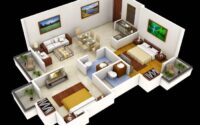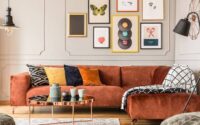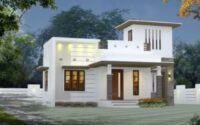3D View of House Interior Design: A Visual Guide
3D view of house interior design has revolutionized the way we envision and create our living spaces. This technology allows designers and clients to collaborate effectively, visualizing the final outcome before a single nail is hammered. It empowers us to experiment with different styles, colors, and furniture arrangements, ensuring a cohesive and personalized design that meets our specific needs and preferences.
With the help of sophisticated software, we can explore a world of possibilities, transforming our dreams into tangible, interactive experiences.
Imagine walking through your future home, exploring every nook and cranny, before construction even begins. This is the power of 3D visualization, offering a realistic and immersive experience that goes beyond traditional blueprints and sketches. It allows for greater clarity, understanding, and collaboration between designers and clients, ultimately leading to more informed decisions and a higher level of satisfaction.
Furniture and Decor in 3D Spaces
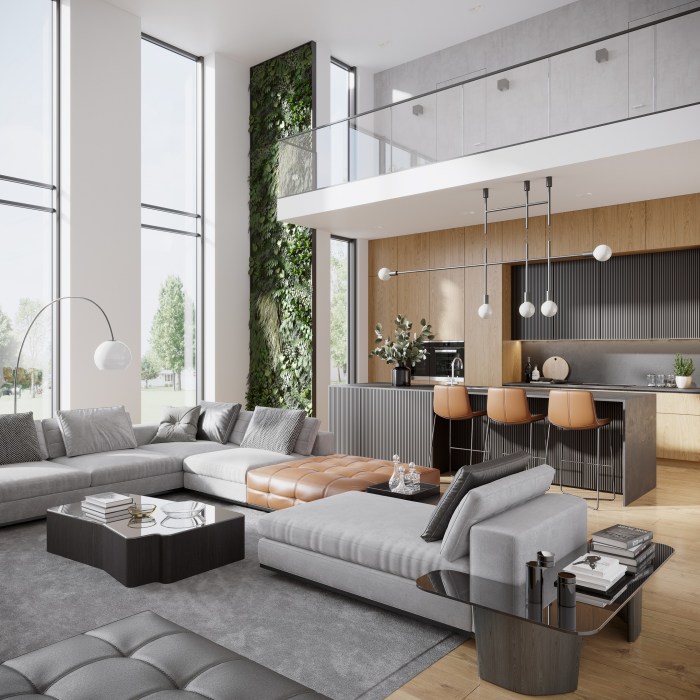
Furniture and decor are crucial elements in 3D interior design, bringing life and functionality to virtual spaces. Choosing the right furniture and strategically placing it within the 3D environment can create a balanced and visually appealing design. Incorporating decorative elements adds personality and enhances the overall aesthetic appeal.
Selecting and Arranging Furniture
Selecting the right furniture for a 3D interior design involves considering both functionality and style. The chosen furniture should not only serve its intended purpose but also complement the overall design aesthetic. When arranging furniture, consider the flow of movement within the space, ensuring there is enough room for people to move around comfortably.
Consider the following tips for effective furniture selection and arrangement:
- Scale and Proportion:Ensure furniture pieces are appropriately scaled to the size of the room. Oversized furniture can make a small room feel cramped, while undersized furniture can make a large room feel empty.
- Balance and Symmetry:Consider the balance and symmetry of furniture placement. Symmetrical arrangements create a sense of order and formality, while asymmetrical arrangements can add visual interest and a more relaxed feel.
- Focal Point:Identify a focal point in the room and arrange furniture around it. This could be a fireplace, a large window, or a statement piece of furniture.
- Traffic Flow:Ensure there is enough space for people to move around comfortably without bumping into furniture. Avoid placing furniture in the middle of walkways or doorways.
- Functionality:Consider the purpose of each piece of furniture and choose pieces that are both functional and stylish. For example, in a living room, a sofa should be comfortable for seating, and a coffee table should be large enough to hold drinks and snacks.
Incorporating Decorative Elements
Decorative elements, such as artwork, plants, and textiles, can add personality and style to a 3D interior design. They can help to create a specific mood or theme, and they can also add visual interest and texture to a space.
- Artwork:Artwork can be used to create a focal point in a room, add color and interest to walls, and reflect the personality of the homeowner. When choosing artwork, consider the size, style, and color of the piece, and how it will complement the existing furniture and decor.
A 3D view of house interior design allows you to visualize your dream home before construction even begins. This is especially helpful when designing a larger space, like a 2000 sq ft house interior design , where every inch needs to be carefully considered.
With a 3D model, you can experiment with different layouts, color palettes, and furniture arrangements to create a space that is both functional and aesthetically pleasing.
- Plants:Plants can add life and freshness to a space, and they can also help to improve air quality. Choose plants that are appropriate for the size and lighting conditions of the room. For example, a large plant can add visual interest to a corner, while a small plant can be placed on a table or shelf.
- Textiles:Textiles, such as curtains, rugs, and throws, can add texture, color, and warmth to a space. Choose textiles that complement the furniture and decor, and that create a cohesive look. For example, a patterned rug can add visual interest to a neutral-colored room, while a textured throw can add warmth and comfort to a sofa.
3D Visualization of a Kitchen Space, 3d view of house interior design
This is a 3D visualization of a kitchen space, highlighting the integration of functional and stylish furniture:
The kitchen features sleek, modern cabinetry in a light gray finish. The countertop is made of durable quartz, providing a clean and elegant look. A large island with a breakfast bar provides ample space for food preparation and casual dining. The island is equipped with a built-in sink and a bar stool seating area. A stainless steel refrigerator and dishwasher blend seamlessly with the modern design. Over the island hangs a stylish pendant light, adding a touch of sophistication to the space. A small dining table with chairs is positioned near a window, offering a bright and inviting space for formal meals. The kitchen features a mix of functional and decorative elements. A collection of decorative bowls and canisters adds a touch of personality to the space, while a vibrant floral arrangement adds a pop of color to the countertop.
Final Summary: 3d View Of House Interior Design
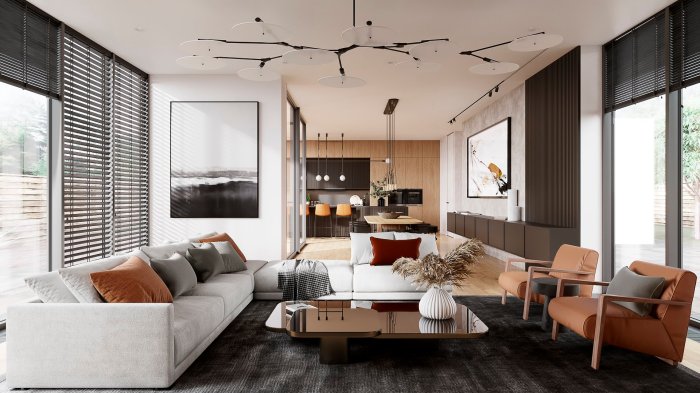
The world of 3D interior design is constantly evolving, driven by advancements in technology and the growing demand for personalized, immersive experiences. As we embrace the power of visualization, we unlock a new era of creative expression, pushing the boundaries of what’s possible in interior design.
With the ability to visualize our ideas in 3D, we can create spaces that are not only aesthetically pleasing but also functional, comfortable, and truly reflective of our unique style and personality. The future of interior design is undoubtedly immersive, interactive, and undeniably exciting.
Clarifying Questions
What are the most popular 3D design software programs?
Some of the most popular 3D design software programs include SketchUp, Autodesk Revit, 3ds Max, and Lumion. Each program offers unique features and capabilities, catering to different skill levels and project needs.
How much does it cost to create a 3D visualization of an interior design project?
The cost of creating a 3D visualization can vary depending on the complexity of the project, the software used, and the experience of the designer. It’s best to contact a professional designer or 3D visualization specialist for a personalized quote.
Can I create my own 3D visualizations?
Yes, there are many user-friendly 3D design software programs available that allow you to create your own visualizations. However, if you’re not familiar with 3D modeling, it’s recommended to consult with a professional for best results.

